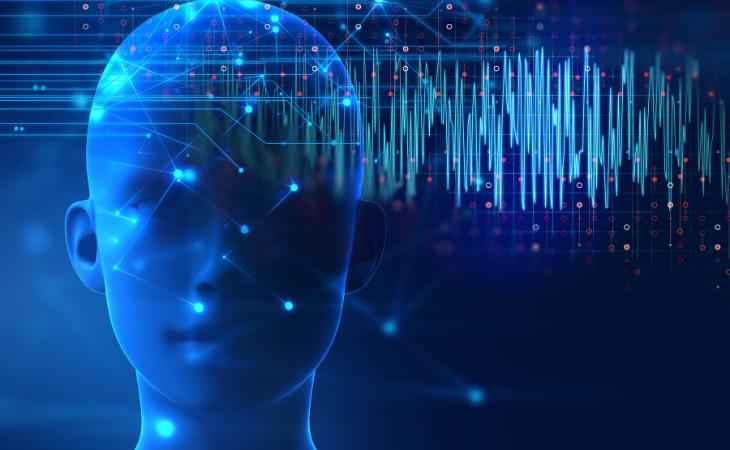
Evolutionary experts propose that the origin of vocal cords can be traced back to prehistoric fish. Around 530 million years ago, an extraordinary mutation in a fish allowed it to extract oxygen from the atmosphere. Even more astonishingly, this fish was able to pass on this unique trait to its descendants.
Its descendants evolved over thousands of years into lungfish, which have lungs as well as a valve that prevents water from entering their respiratory system. This valve survived when humans evolved and became the vocal cords thousands of years later. When air is pushed up from the lungs, it causes portions of this valve to vibrate against one another, producing the sound of a voice.
While parrots and some birds are famous for mimicking human speech, they are not the only members of the animal kingdom with this talent. In 1984, Noc, a beluga whale, astounded researchers by producing vocalizations that resembled human speech. Rocky, a well-known ape at the Indianapolis Zoo, mimicked his caregivers' words in exchange for food. Furthermore, Koshik, an elephant, exhibited cleverness by utilizing his trunk to replicate human sounds.
In 2018, researchers made a fascinating revelation about orcas: they can mimic human words, though there's no evidence to suggest they comprehend their meaning. Wikie, a 14-year-old orca from France, successfully echoed basic words like "hello," "Amy," "ah-ha," "one, two," and "bye-bye" when prompted. Furthermore, she displayed the ability to replicate previously unfamiliar orca sounds. Based on this analysis, it appears that orcas acquire sounds through imitation, thus shedding light on a phenomenon they share with human speech: regional dialects.
In 2020, the voice of an ancient Egyptian mummy, Nesyamun, echoed through the ages for the first time in thousands of years. This 3,000-year-old priest's voice was meticulously reconstructed through innovative means. Scientists employed CT scans to create a precise 3D-printed replica of his vocal tract. They then established a connection to a speaker, transmitting an electronic signal that faithfully replicated the human larynx's output.
The experiment produced a unique vowel sound, resembling what would be heard if Nesyamun's larynx were reanimated. This research provides a look into a future era in which history can be heard rather than only seen in the form of archeological relics. Nonetheless, the software utilized to recreate these historical voices may be improved.
His reconstructed voice is a promising beginning; however, it falls far short of replicating the true auditory experience of ancient Egyptians who listened to his songs and speeches.
Findings from a 2023 study in Kruger National Park, South Africa, have brought to light a surprising fact: animals in the park are more apprehensive of human voices than the roars of lions. Antelopes, elephants, giraffes, leopards, and warthogs were exposed to recordings of various sounds, including humans conversing in local languages.
Surprisingly, approximately 95% of the animals fled when they were exposed to human voices. At the same time, their reaction to lion sounds was less intense, with some elephants even displaying defensive behaviors against perceived threats.
The results are consistent with reports from various corners of the globe, all of which point to animals harboring greater fear of humans than their fellow members of the animal kingdom. This poses a dilemma for wildlife tourism, as the presence of tourists can inadvertently deter the very animals they wish to observe.Further research has even suggested that fear alone can contribute to a decline in animal populations. Hence, people have to look into ways to reduce this fear, maybe using it to protect fragile species. One innovative approach under examination involves the use of human-generated sounds to deter rhinos from poaching-prone areas.
Everywhere around the world, the way people communicate with babies is strikingly similar. People instinctively adopt a joyous, high-pitched voice to respond to an infant's charming but uncomprehending face.This seemingly natural occurrence has been carefully researched by experts, who have discovered solid evidence supporting its widespread prevalence. In fact, this unique mode of communication has its own scientific abbreviation, IDS, which stands for infant-directed speech (and studies show that we can tell when it isn't).
IDS appears to be employed automatically, particularly by mothers, to help infants learn their language. Not only does it enhance vowel sounds in several languages, making it simpler for newborns to distinguish between words, but it also conveys emotion more forcefully. Babies can grasp emotions by hearing someone's voice as early as three months. Even before that, voices played a vital role in their development. They show a preference for their mother's voice and language as soon as they are born, having heard enough of it while in the womb to identify it from others.
Related: 8 Biggest Mysteries Still Surrounding the Human Body

